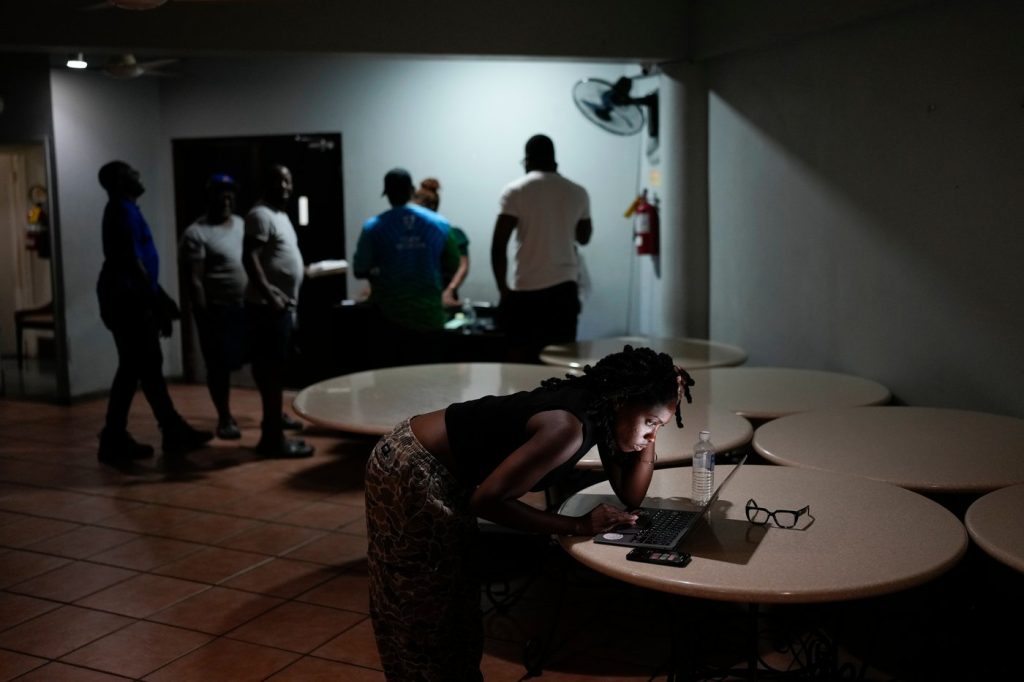KINGSTON, Jamaica (AP) — Hurricane Melissa was poised to strike Jamaica on Tuesday as a catastrophic Category 5 storm, marking the most powerful cyclone to impact the island since recordkeeping began 174 years ago. Forecasters anticipated that the storm would make landfall early on Tuesday, cutting diagonally across Jamaica — entering through St. Elizabeth parish in the south and exiting around St. Ann parish in the north.
In the hours leading up to the arrival of Hurricane Melissa, Jamaican officials indicated that they had enacted all necessary preparations and issued warnings of potentially catastrophic damage. Prime Minister Andrew Holness commented on the severity of the situation, stating, “There is no infrastructure in the region that can withstand a Category 5. The question now is the speed of recovery. That’s the challenge.”
Preparations included reports of landslides, fallen trees, and widespread power outages across Jamaica. Officials cautioned that the cleanup and damage assessment efforts would be slow and challenging. A life-threatening storm surge of up to 13 feet (4 meters) was anticipated along the southern coastline, raising concerns over the safety of hospitals located by the shore. Health Minister Christopher Tufton revealed that steps were taken to relocate some patients from ground-level wards in anticipation of the surge.
As the storm approached, it was reported to have already resulted in seven fatalities across the Caribbean, including three deaths in Jamaica, three in Haiti, and one in the Dominican Republic, where one additional individual remained missing. Hurricane Melissa was situated approximately 150 miles (240 kilometers) southwest of Kingston and around 330 miles (530 kilometers) southwest of Guantánamo, Cuba, boasting maximum sustained winds of 175 mph (280 kph) and moving north-northeast at a very slow pace of 2 mph (4 kph).
"We will get through it together,” stated Evan Thompson, the principal director at Jamaica's meteorological service. The uncertainty surrounding the powerful storm has led to significant anxiety among the local populations. Colin Bogle, an advisor at Mercy Corps situated near Kingston, noted that most families chose to shelter in their homes despite official evacuation orders for flood-prone communities. He emphasized the fear of losing homes, livelihoods, and the distress surrounding potential injuries and displacement.
Matthew Samuda, Jamaica’s water and environment minister, mentioned that more than 50 generators were on standby for deployment post-storm but urged residents to conserve clean water. He said, “Every drop will count.”
As Hurricane Melissa continued on its path, it was also anticipated to make landfall in eastern Cuba later on Tuesday as a strong hurricane. A hurricane warning was issued for the provinces of Granma, Santiago de Cuba, Guantánamo, and Holguin, while a tropical storm warning applied to Las Tunas. Reports indicated that parts of Cuba could receive up to 20 inches (51 centimeters) of rain, accompanied by substantial storm surges along the coast. In preparation, Cuban officials announced the evacuation of more than 600,000 individuals from affected areas, including the nation’s second-largest city, Santiago.
Hurricane Melissa had also left parts of southern Haiti and the Dominican Republic inundated, and tropical storm warnings remained in effect for Haiti. As the storm progressed further, it was projected to veer northeast after passing Cuba and impact the southeastern Bahamas by Wednesday evening. A hurricane warning was then declared for the southeastern and central Bahamas, alongside a tropical storm warning for the Turks and Caicos Islands.










